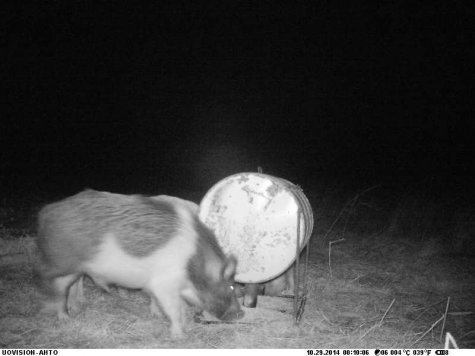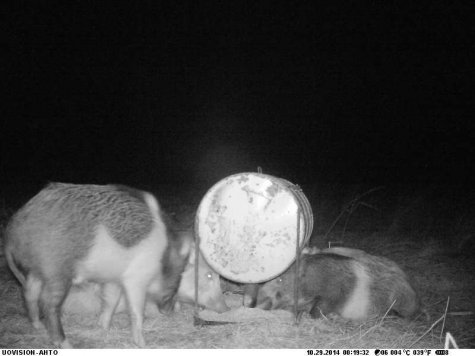Discussion of wild boar crosses
Text Vahur Sepp, forester
Images from track camera
Translation Liis
After the reestablishment of Estonia’s independence in 1991 the raising of boars at home became popular. Times were difficult. Some dealt with privatization, others searched for alternative living and subsistence means. Keeping wild boar farms seemed to be a potentially profitable venture.
The boar and the domestic pig are so closely related that crosses produce offspring. In many households this was made use of, and successfully too. As always, mistakes occurred. A storm might have broken a tree that fell and crushed the boars’ fence, or someone forgot to close the gate. In whatever ways, boar and domestic pig hybrids escaped into nature.
In places in our forests strange black-and-white pigs can encountered today: the boar and domestic pig hybrids.
If boar genes are introduced into domestic pig farms nothing much will be wrong. It may even be characterized as breeding development. Introduction of domestic pig genetic material in our forests however is unacceptable. The consequences can never be wholly foreseen. So far human meddling in nature has mostly only caused problems. We can only hope that a couple of cold and snow-rich winters in the near future will bring about a selection among the wild boar.
Regarding the hybrids, hunters and scientists should take a stand. The right thing would be to declare a free for all hunt for the hybrids. Regarding the future of boars in Estonia, much depends on ourselves. But we must always tidy up after our own actions.










